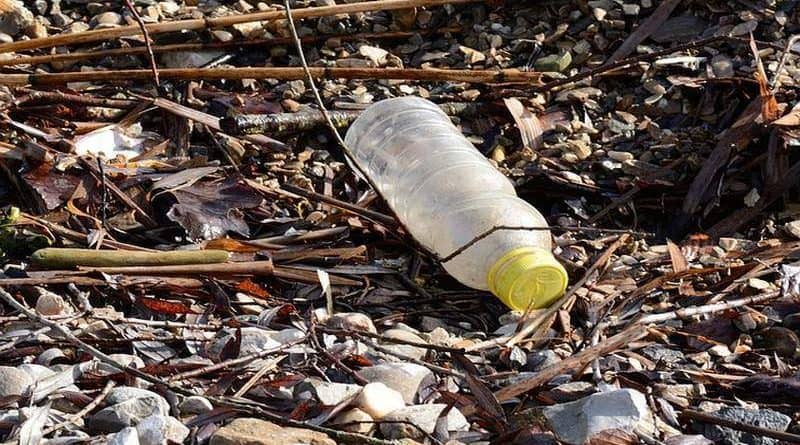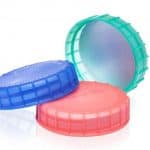PET Bottle Recycling: Transforming Bottles back into Bottles
Last updated 6 years ago by pi-Team
PET Bottle Recycling: how to transform bottles back into bottles. Every other PET bottle worldwide has been made from pellets coming out of a Buhler plant. Buhler makes sure that post-consumer PET bottles are transformed back into bottles by careful recycling. It constructed such a plant for Amcor PET Recycling.
Bottle-to-Bottle recycling process
Eight million metric tons of PET pellets are manufactured each year worldwide for making bottles, half of them on Buhler installations. One and a half million tons of PET bottles are recycled, five percent are transformed back into bottles. To increase this percentage, companies such as Amcor PET Recycling in France have specialized on the bottle-to-bottle recycling process.
Since 1994, the recycling market has been growing at a double-digit rate, doubling every four years in Europe. In Switzerland, some new PET bottles are already made from fifty percent recycled material.
Food-grade PET bottles out of recycled material
All this prompted Amcor to expand its capacities as fast as possible. Buhler was selected as the supplier of the new plant for three reasons: First, as a specialist in the manufacture of virgin material, Buhler knows the exact characteristics that pellets must have if they are used for making food-grade PET bottles. These requirements apply equally to recycling and have been systematically met by the Buhler bottle-to-bottle process.
There, the recycled material is upgraded to the viscosity level of virgin material, degradation reactions from previous processing operations are reversed, and contaminants from the earlier life of the PET bottles are entirely removed. Second, this method costs less than the conventional recycling process.
This is mainly due to its entirely continuous operating mode, which reduces energy consumption and the operating requirements. The third reason is the expandability of the continuous Buhler process, which enables the current output of 30 metric tons a day to be easily increased to the four-fold amount of 120 tons daily.
As good as virgin PET material
The recovery system is basically simple: Collect the bottles, grind them into flakes, wash them, extract the pellets, and make new material out of them. But it is rarely possible to produce food-grade pellets meeting virgin material standards from washed PET flakes.
The Buhler process does exactly this: The recycled pellets are not only as good as virgin material, but also less expensive to produce. To achieve this goal, Buhler combined the advantages of a novel extrusion technology with the superior characteristics of its continuous solid state polycondensation (SSP) process.
The washed PET flakes are fed directly into a ring-type extruder equipped with 12 screws. There they are melted and decontaminated in two degassing stages. This also thoroughly removes any organic components such as beverage aromas or solvents that have entered the plastic through misuse of the bottles. A filter removes solid contaminants.
The resulting raw pellets are amorphous and are therefore crystallized at a temperature of 150 degrees Celsius. Polycondensation takes place at over 200 degrees Celsius, its purpose being to lengthen the polymer chains in the pellets. This increases the viscosity and therefore the strength of the material.
Advanced recycling process: saving time and saving energy
From an ecological point of view, bottle-to-bottle recycling doubtlessly pays off, a fact evidenced by energy balances. The advantages over incineration are also clear. The Buhler process saves time and further energy.
To recover PET flakes, these must normally be dried in a separate hopper. This operation, which takes up to four hours, is reduced by the Buhler ring extruder process to a few seconds. Treatment of the melt is just as short and therefore extremely gentle and energy-efficient.
Additional savings are achieved by the low quantity of buffer material needed between the extrusion and polycondensation stages. The Amcor plant has already gone on stream.
Recycled PET pellets with FDA approval
Initial measurements taken after the extrusion stage showed up to 30 percent better color values than those obtained with conventional processes – a direct consequence of the material’s low heat history in the Buhler process. Also the expected lower energy consumption was confirmed.
The recycled bottle pellets and granulate obtained from the Buhler bottle-to-bottle process comply with the relevant food legislation. Including the FDA non-objection letter and the certification according to the European ILSI guidelines.
Fast growing demand for PET bottle-to-bottle recycling
The stringency of global environmental laws is likely to increase further in the foreseeable future. But more than that, with the constantly rising prices for raw PET material sourcing from the chemical industry, it makes even more sense, not only ecologically, but also economically. Thus the amortization of recycled PET material for preform suppliers and bottlers alike is steadily increasing – and so is the demand.
In addition to the production of virgin material, PET recycling will become part of the future state of the art. The experts at Buhler Process Technologies do not doubt for a moment that nearly all PET bottles may contain recycled material in the future. And in Switzerland, the total available recycled PET granulate had already been sold out in April 2019 for the complete year!
Topic: Bottle-to-Bottle recycling process. Food-grade PET bottles out of recycled material. Recycled PET pellets with FDA approval.
Source: Bühler press release and own research.
Image credits: ©2019 pixabay.com – Antranias – #1184735





